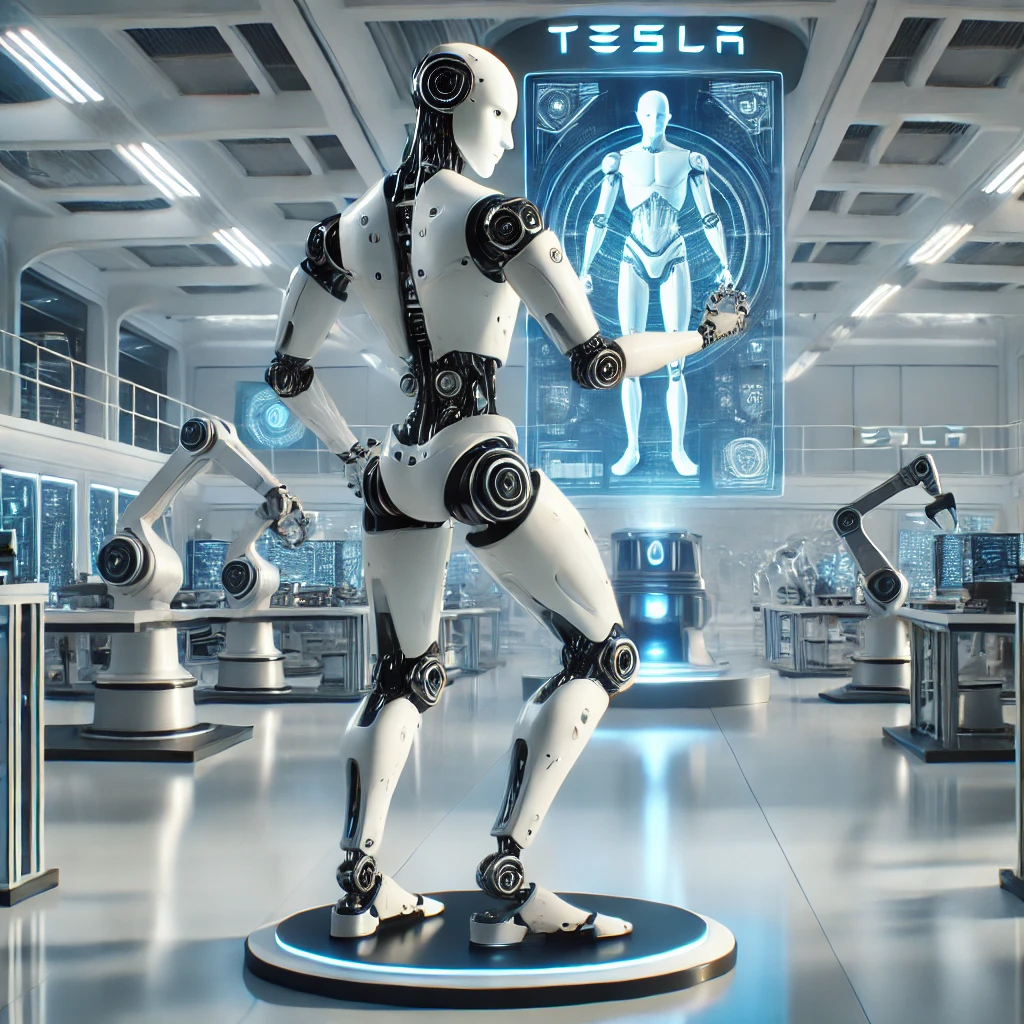Tesla has long been at the forefront of innovation, and its foray into robotics represents a bold move into the future. The Tesla Bot, also known as Optimus, is a humanoid robot designed to help humans with repetitive, dangerous, and labor-intensive tasks revealed by Tesla CEO Elon Musk, Optimus is positioned as a technology that changes with the potential to reshape jobs and redefine human performance.
What is Tesla Optimus?
Optimus is a sleek humanoid robot that stands about 5 feet 8 inches tall, weighs about 125 pounds, and is designed to handle tasks that are undesirable or dangerous to humans It has advanced AI, with Tesla self-driving technology It is and powers, and uses sensors to move itself and cameras through the environment It is well-equipped
The robot is capable of lifting heavy objects, performing specific tasks, and maneuvering in different work environments. Its design incorporates Tesla’s expertise in energy efficiency, allowing the Optimus to operate for extended periods without the need for frequent recharging.
Vision and purpose
Elon Musk envisions Optimus as a solution to labor shortages and a catalyst for social change. Musk emphasized that the ultimate goal of robotics is to eliminate the need for humans to perform monotonous or dangerous tasks.
“Optimus is not just about automating tasks; it’s about uplifting humanity,” Musk explained. “People will be able to concentrate on higher-level tasks, such as creativity, education, and problem-solving, thanks to permanent robots.
“anent robots.”
In addition, Tesla sees Optimus as a stepping stone to economic efficiency. By integrating robots into jobs like manufacturing, logistics, and even personal care, Musk envisions a world where universal capital is possible, supported by the robotic workforce in his mind.
Technical skills
The engineering challenge of creating a humanoid robot like Optimus is formidable. Tesla’s expertise in electric vehicles and AI allows it to create an Optimus with major capabilities:
Autonomous Navigation: Using Tesla’s AI software, Optimus can navigate tight terrain and avoid obstacles.
Dexterity and Strength: The robot is equipped with motors that mimic human muscle movement, enabling precision and heavy lifting.
Energy efficiency: Powered by Tesla batteries, the Optimus offers high energy efficiency for continuous operation.
The resources that can be used
Optimus has a wide range of applications, e.g.
Manufacturing: Handle repetitive assembly line tasks.
Warehousing and logistics: logistics and inventory management.
Health Care: To help care for and provide assistance to the elderly or disabled.
Hazardous Work: Work in unsafe environments, such as construction sites or disaster areas.
The challenges ahead
While the possibilities are vast, Tesla’s robot faces several obstacles:
Technical limitations: Developing robots that can reliably perform complex tasks in complex environments is an ongoing challenge.
Ethical concerns: The rise of robotics raises questions about worker displacement, privacy, and potential abuse of the technology.
Regulatory restrictions: Governments and organizations will need to establish guidelines to ensure the responsible use of robots.
Critics have also voiced concerns about Tesla’s ambitious timeline, suggesting the company may be underestimating the challenges of humanoid robots.
Looking ahead
Tesla’s Optimus isn’t just a robot—it represents Elon Musk’s vision of a future where humans and technology coexist harmoniously. By solving employee challenges to improve productivity, Optimus can become a cornerstone of businesses and homes.
As the technology evolves, the true impact of Optimus will depend on how well Tesla handles the technical, ethical, and social challenges of advanced robotics One thing is clear: Tesla Bot is poised to push things new boundaries and redefine the relationship between humans and machines.
